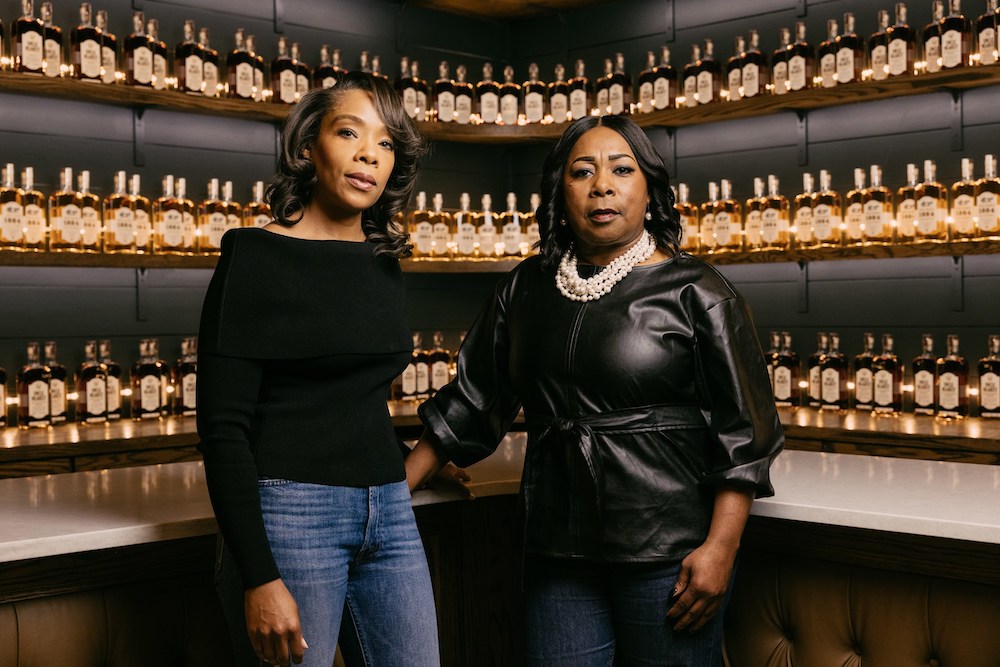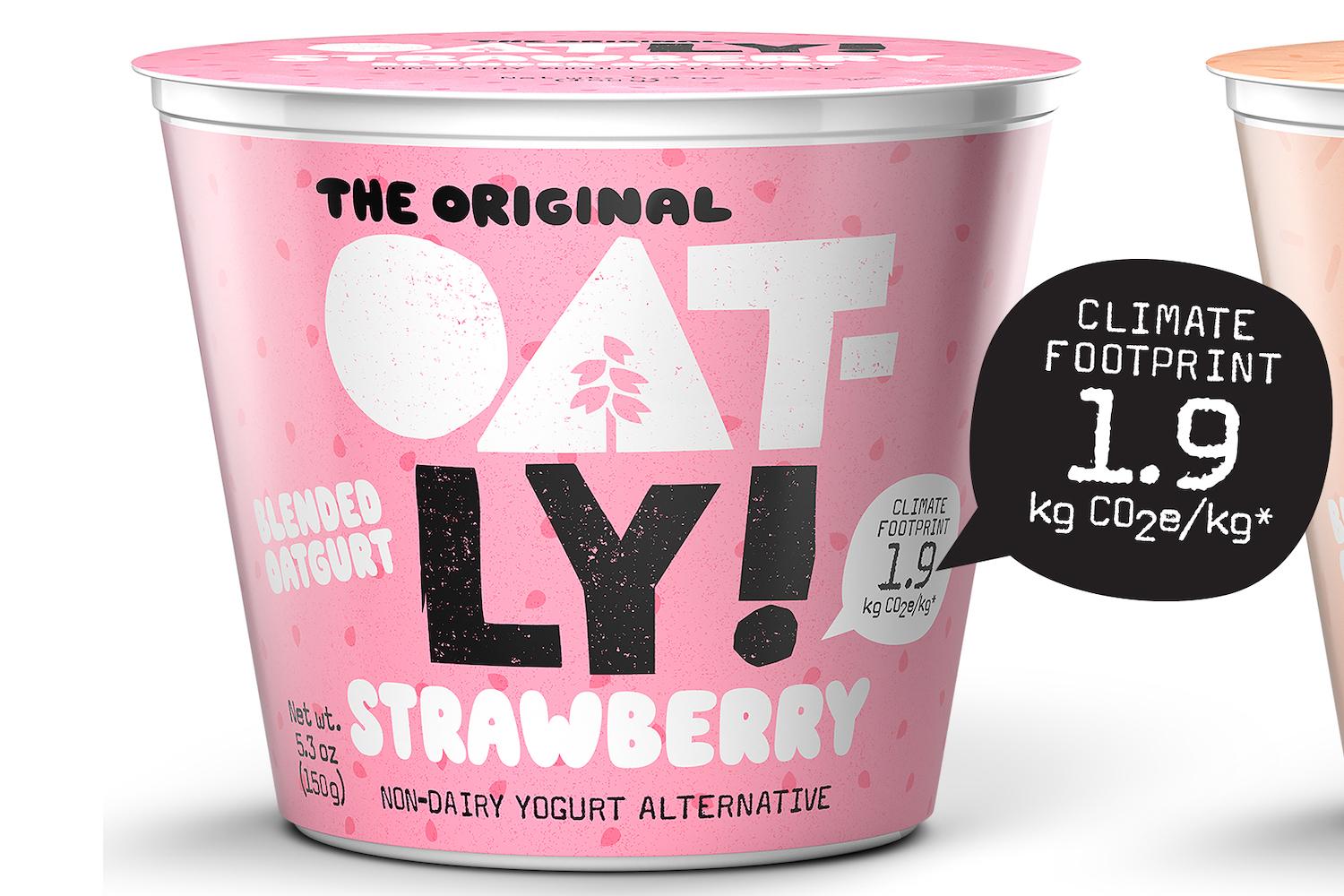CVS Took on Big Tobacco Nine Years Ago: Is Big Religion Next?


CVS Health pulled all tobacco products from store shelves almost a decade ago and never looked back. Now, the retail giant is facing a challenge of a different sort as religious extremists exert their leverage to ban access to birth control and abortion. CVS has taken some steps to accommodate religious beliefs in the past, but now the company has been pushed into a corner and it may just come out swinging.
CVS expands its public health mission
CVS has been evolving from a simple drug dispensary to a community healthcare provider since 2006 when it purchased the firm Caremark Rx. CVS also acquired Coram, a specialist in home infusion therapies for diabetes and other serious illnesses, seven years later.
In 2014, CVS stopped selling tobacco, in accordance with its new corporate name CVS Health and the launch of its new MinuteClinic and telemedicine services. The company took the hit on tobacco sales with a long-term business plan in mind.
“Eliminating $2 billion in sales is not something that is done every day by a Fortune 12 publicly-traded company…despite this loss in revenue, we were willing to take that risk, to ensure a positive impact on the long-term health of our customers, clients and colleagues,” CVS Senior Vice President Eileen Howard Boone said at the time.
CVS’s tobacco ban quickly had a discernible impact on public health. By 2017, studies began to show that cigarette sales in states with CVS stores declined compared to those without. That result is consistent with other studies showing that smokers reduce or stop smoking when retailers, workplace rules or government regulations cut their access to tobacco products.
CVS is backed into a corner on birth control
Those results lend more weight to the potential for CVS and other retailers to make a significant, positive impact in other areas of public health, including the health of women, girls and other pregnancy-capable people.
That’s where things get complicated. Under Title VII of the 1964 Civil Rights Act, employers are required to make reasonable accommodations for their employees’ religious beliefs, unless doing so would cause an undue hardship for the employer or other employees. For CVS and other retailers, that has meant allowing employees to opt out of conducting certain transactions — including those related to reproductive care.
As critics have pointed out, the opt-out policy encumbers the customer experience and can cause delays that impact health and well-being. Opt-outs can also compromise the customer’s privacy and interfere with their freedom to practice birth control in accordance with their own religious beliefs.
CVS initially enabled its MinuteClinic nurses to opt out of prescribing or even discussing contraceptives. However, in 2021 the company put its foot down. The policy was revised to clarify CVS’s mission to provide public health services on a holistic basis, not a pick-and-choose basis dependent on religion.
Last fall, CVS spokesperson Mike DeAngelis explained the new policy to Becker’s Hospital Review: "MinuteClinic does not prescribe abortifacients or provide abortion services, but educating and treating patients regarding sexual health … have become essential job functions of our providers and nurses. We cannot grant exemptions from these essential MinuteClinic functions.”
The Becker’s article referenced lawsuits brought by former CVS nurse practitioners in Kansas and Virginia, both of whom claimed they were fired under the new policy. A third former CVS nurse practitioner filed a lawsuit in Texas last month over the same issue. As reported by NBC News and other media, CVS responded as before, explaining that “educating and treating patients regarding sexual health matters — including pregnancy prevention” are essential services at MinuteClinics.
The 23-year expansion of medication abortion
Under normal circumstances, CVS would have a good chance of prevailing in court. However, the circumstances are anything but normal. The Republican-appointed conservative supermajority on the U.S. Supreme Court has already indicated its enthusiasm for throwing settled law and objective facts out the window in support of partisan political positions on reproductive rights and gun safety, among other issues.
In the meantime, another battleground has emerged over the growing use of medication abortion.
Medication abortion has been widely available in the U.S. since 2000 when the U.S. Food and Drug Administration approved the proprietary drug Mifeprex to terminate pregnancies up to seven weeks. The termination is a two-step process in combination with a second drug, misoprostol.
Since then, the FDA has extended the use of Mifeprex to 10 weeks of pregnancy, approved a generic version of mifepristone, and established a standard certification process called the Mifepristone REMS Program.
This trend toward easing access to mifepristone accelerated further during the COVID-19 pandemic when the FDA dropped a longstanding requirement for in-person visits and issued guidelines that permitted telemedicine services and mail delivery.
Healthcare providers advocated strongly for the change. In 2020, the American College of Obstetricians and Gynecologists put out a statement saying: “Clear science and the consensus of the medical community underscore that mifepristone is a safe medication and that the FDA’s in-person dispensing requirement provides no medical benefit to patients.”
U.S. FDA ups the ante on abortion access
Last month the FDA expanded access to medication abortion even further, with new guidance for the REMS Program. For the first time, pharmacies can now dispense prescriptions for mifepristone if they are certified to do so under the REMS Program. The FDA also affirmed that certified pharmacies can dispense abortion drugs by mail.
The agency further indicated that certified pharmacies are not allowed to permit any interference with the 10-week timeline. “Certified pharmacies must ensure mifepristone is dispensed to the patient in a timely manner,” it declared.
That directive appears to support pharmacies like CVS in their efforts to improve access to essential healthcare services, without any delay or inconvenience due to religious objections.
Both CVS and Walgreens have said they are taking steps to be certified under the REMS Program, though they reportedly plan to dispense mifepristone only where permitted by state law.
As for mailing mifepristone across state lines, that is currently a matter of dispute. In December, the U.S. Department of Justice determined that the anti-abortion clause of the Comstock Law — which restricts materials sent through the mail — does not apply to drugs like mifepristone and misoprostol, because they are commonly used in a variety of non-abortion applications.
The gloves come off
The Justice Department also noted that mifepristone is a federally approved drug. Nevertheless, the attorney general of Missouri, Andrew Bailey, is leading a group of 20 state attorneys general who co-signed a letter warning both CVS and Walgreens against dispensing abortion medications by mail.
It's no surprise to see their objections are drawn from thin air. “Abortion pills impose far higher risks of complications compared to surgical abortions,” Bailey stated, in direct contravention of settled science.
It's also no surprise to see the list of co-signers overlap with the same attorneys general who have been railing against “woke capitalism,” including Texas Attorney General Ken Paxton.
Against this backdrop, the crusade against reproductive rights has become a crusade against big business. Leading U.S. corporations have yet to push back in any meaningful way, but the fight over mifepristone could be the straw that breaks the camel’s back.
In a related development, last fall anti-abortion groups brought a case to a federal court in Texas that could overturn the entire FDA approval and rule-making process, with widespread consequences across the entire pharmaceutical industry and related fields.
The Texas judge hearing the case is described as “a Trump appointee with longstanding affiliations with the religious right, including work as an attorney with a conservative Christian legal group based in the state.” Parties in the case have until Feb. 10 to complete their filings, and a decision is expected shortly.
The clock is also running out for U.S. businesses that profess to support diversity, equity and inclusion. The bottom-line and human consequences of providing financial support to right-wing politicians who pander to religious extremists is coming into sharp focus, and they are not pretty.
Images courtesy of CVS Health
Black-Owned Whiskey Brand Raises a Glass to HBCUs


Uncle Nearest Premium Whiskey recently announced the launch of its HBCU Old Fashioned Challenge, a nationwide initiative to raise $1 million for historically Black colleges and universities (HBCUs) and raise awareness about the role HBCUs play in workforce diversity and economic mobility.
"Many have opinions about Deion Sanders’ decision to move from Jackson State, an HBCU, to Colorado. I will tell you what I know to be true: Coach Prime put a much-needed spotlight on how HBCU programs can compete if they are properly funded," said Fawn Weaver, founder and CEO of Uncle Nearest, in a statement. "He showed us what one person with influence, shining a light on HBCUs, can do to help."
The nation’s 58 HBCUs constitute just 3 percent of the higher education institutions in the U.S., but they enroll 10 percent of all African-American college students and produce nearly 20 percent of all African-American college graduates. Many of these graduates have gone on to become high achievers in American society, making up 40 percent of African-American judges, 50 percent of African-American doctors and lawyers, and 40 percent of African-American engineers in the U.S. Notable HBCU alumni include the late Supreme Court Justice Thurgood Marshall, the poets Langston Hughes and Toni Morrison, the actors Phylicia Rashad, Samuel L. Jackson and Debbie Allen, and the inventor George Alcorn.
Still, many HBCUs are underfunded — contributing to lower graduation rates due to student debt and lack of resources, as well as understaffing and underrepresentation of Black faculty members.
Weaver noted that enrollment in HBCUs "grew tremendously" after Beyoncé’s 2019 documentary, "Homecoming," which was praised as a celebration of African-American culture and education with HBCUs as the foundation of that message.
"I am certainly no Beyoncé, but I have a spotlight on me, and it’s my greatest honor to be able to shift that spotlight where it should be — on our incredible historically Black colleges and universities," Weaver said. "When I reached out to share this program, so many of them asked me, ‘What can we do to help?’ I told each of them that I didn’t want them to do anything. It’s our turn to be torchbearers and give back, asking nothing in return."

The Uncle Nearest Old Fashioned Challenge was launched on Martin Luther King, Jr. Day, in order to spotlight the legacy of HBCUs in King’s life and work. Both King, who enrolled in college at the age of 15, and his father, Martin Luther King, Sr., were alumni of Morehouse College, a historically Black men’s liberal arts college in Atlanta. The challenge extends through March, which is Women’s History Month, as an homage to Spelman College, a historically Black women’s college in Atlanta and the No. 1 ranked HBCU in the U.S.
Through the HBCU Old Fashioned Challenge, which runs through March 31, consumers may participate in one of four ways:
- For every Uncle Nearest Old Fashioned sold at participating bars and restaurants, $1 is being donated to the challenge.
- Uncle Nearest is donating $1 for each bottle of whiskey sold at participating online and brick-and-mortar retail stores.
- ReserveBar is selling Old Fashioned Cocktail Kits, featuring a bottle of Uncle Nearest as well as syrup and bitters from Hella Cocktail Co., a Black-owned bitters and soda company. For every kit sold, both Uncle Nearest and ReserveBar are donating $1 to the challenge.
- During the challenge, fans of Uncle Nearest whiskeys can also submit a photo of a homemade Uncle Nearest Old Fashioned at www.oldfashionedcocktail.com, and Uncle Nearest will donate $1 for each image received.
Thus far, the challenge has garnered an enthusiastic response from the company’s partners and distributors, said Kate Jerkens, senior vice president of global sales and marketing for Uncle Nearest.
"They all want to participate," she told TriplePundit. "Some of them are one-upping us and say, ‘You’re doing a dollar, we’re doing $2.' We’ll take it, we love it. We’ve gotten so much incredible support and people behind it really wanting to stand up."
The top-selling Black-owned spirits brand in the world, Uncle Nearest is named for Nathan "Nearest" Green, a once-enslaved person who taught his distilling techniques to Jack Daniel, founder of the Jack Daniels Tennessee whiskey distillery.
Emancipated after the Civil War, Green was hired as Jack Daniels' first master distiller and is the first African-American master distiller in the U.S. Green’s great-great-granddaughter, Victoria Eady Butler, is Uncle Nearest's master blender and the first known Black woman master whiskey blender in history.
The Old Fashioned Challenge raised $200,000 by Feb. 1, and the distiller hopes it will become a "tent pole" for further efforts that will be "repeated year after year," Jerkens said.
"There are so many Americans in the last few years who say they want to do better for our fellow Americans, or want to know how to help or how to become more of an ally or more of an advocate," Jerkens told us. "Funding HBCUs is giving back to Black Americans. It is a win-win for everyone. Go enjoy a cocktail with a friend. Talk to them about HBCUs and their relevance in our country and in the history of African Americans, and your donation is going to the HBCUs."
Images courtesy of Uncle Nearest Premium Whiskey
What Your Neighborhood is Missing: More Trees


Everyone wants to have it made in the shade, and new research suggests that shade can actually save lives. Normally, planting more trees is done with clean air in mind — trees transform atmospheric carbon dioxide into oxygen, a two-front attack on polluted air. But in a recent study published in the Lancet, a team of researchers concluded that efforts to plant more trees, specifically in urban centers, could save lives by offering vital reprieve from unbearable heat.
The research team from Barcelona's Institute for Global Health was specifically concerned with identifying the negative effects of urban heat islands and the role that trees can play in mitigating their harm.
According to the U.S. Environmental Protection Agency, urban heat islands appear "when cities replace natural land cover with dense concentrations of pavement, buildings, and other surfaces that absorb and retain heat. This effect increases energy costs (e.g., for air conditioning), air pollution levels, and heat-related illness and mortality.”
The research team found that planting more trees in the densely-packed urban centers where urban heat islands most often occur would result in tree canopies that could provide refuge from relentless summer heat.
"Our results showed the deleterious effects of [urban heat islands] on mortality,” the study reads, "and highlighted the health benefits of increasing tree coverage to cool urban environments, which would also result in more sustainable and climate-resilient cities.”
Urban green infrastructure offers twofold benefits
Okay, so shade from tree canopies can help to mitigate intense heatwaves. But even further, the research team found that expanding tree coverage to 30 percent could reduce urban temperatures altogether, cooling cities by an average of .40 degrees Celsius. That may seem slight, but it is important to remember that even slight spikes in intense heat can be just enough to reach the tipping point into heat-induced mortality.
"Overall, 6700 premature deaths could be attributable to the effects of [urban heat islands],” the research team found. "We also estimated that 2,644 premature deaths could be prevented by increasing city tree coverage to 30 percent, … corresponding to 84 percent of all summer deaths.”
Tree-planting is just the start to mitigate urban heat islands
Increasing tree coverage is not a panacea that addresses every adverse effect of climate change, and urban planners will have to take further action to ensure their cities don’t become archipelagos of urban heat islands. What’s more, the success of a movement to plant more trees in urban centers will vary from city to city, as some existing city centers have not been planned or developed in a way conducive to increasing green coverage.
So, planting more trees may not be a one-size-fits-all solution, but it is a great place to start. Given the European Environmental Agency declaration last year that climate change was the main threat to human life in the 21st century, any action that even slightly combats the disastrous effects of climate change is a valuable action.
"Reducing the health impacts of heat requires implementing a wide range of solutions, including effective heat health action plans, urban greening, appropriate building design and construction, and adjusting working times and conditions,” the EEA stated in a 2022 report.
The data shows that urban heat islands have been killing thousands of people each year. In the past, policymakers may have shrugged off tiny rises in summer heat as ineffectual. Maybe heat-induced deaths in urban centers didn’t register on government radars before, but it looks like legislators have finally begun to sweat the small stuff.
Image credits: Josh Wilburne and Nelson Ndongala via Unsplash
How U.S. Businesses Helped Halt the Pebble Mine Project — And What's Next for Alaska's Bristol Bay


Alaska's Bristol Bay.
Pollution continues to besiege the oceans of the world, but signs of a better future are beginning to emerge. One major milestone occurred last month when the notorious Pebble Mine project in Alaska finally lurched to a halt — for now, at least.
U.S. businesses raise awareness about the Pebble Mine project
The Pebble Mine project would have been located at a site about 230 miles southwest of Anchorage. The prize was substantial: the Pebble deposit, first discovered in 1987, has been described as the world's largest deposit of copper porphyry along with molybdenum and gold.
The environmental impact would have been even more consequential. In order to operate economically, the mine was projected to sprawl over two miles wide and reach thousands of feet into the earth, with billions of tons of rock to be excavated. It would require the construction of massive dams to fill two artificial lakes, along with a new deepwater port as well as new roads, water supply and power generation.
Nevertheless, in 2001 the company Northern Dynasty Minerals Ltd acquired the right to develop the site. Other leading companies also got involved in the project. In 2007 Rio Tinto acquired a 19.1 percent stake in Northern Dynasty, which also formed a 50-50 joint venture with the U.K. firm Anglo American to develop the mine.
Trouble soon followed. Local fishery stakeholders and environmental organizations brought the project to the attention of the public, with an assist from Tiffany & Co. among scores of other leading U.S. businesses.
The publicity paid off. Anglo American pulled out of the project in 2013 despite having to take a $300 million penalty for doing so. Rio Tinto also detached its name from the project. The company divested its stake in Northern Dynasty in 2014, just a few weeks after the U.S. Environmental Protection Agency announced it intended to use its Clean Water Act authority to protect Alaska's Bristol Bay.
ESG investing joins forces with tribal rights
Investor activism also had an impact. In 2011, the Environmental News Service reported that 29 investor organizations collectively asked the EPA to perform a Clean Water Act review on the Pebble Mine project. The group held a total of 13 million shares in Anglo American, topped by Trillium Asset Management Corp. and Calvert.
"This proposed mine has potentially devastating consequences for the people and the ecosystem of Bristol Bay," Trillium vice president Jonas Kron told the Environmental News Service.
"Ecosystem degradation is of serious concern to investors," added Calvert director of shareholder advocacy Stu Dalheim, who said "responsible resource development is critical to all economic, environmental and cultural stakeholders."
The corporate ESG (environmental, social and governance) movement also came in response to indigenous efforts to stop the mine. In 2010, Alaska Native Tribes petitioned the EPA to protect Bristol Bay, in concert with recreational and commercial fishers, chefs and other stakeholders. In 2017 the United Tribes of Bristol Bay also joined together with the Southeast Alaska Indigenous Transboundary Commission in a first-of-its kind coalition, aimed at raising the pressure on Pebble and other projects.
Pebble Mine is finally over, for now
All that hard work paid off last month when the EPA issued a Final Determination on Bristol Bay under section 404(c) of the Clean Water Act.
"After reviewing the extensive scientific and technical record spanning two decades, EPA has determined that specific discharges associated with developing the Pebble deposit will have unacceptable and adverse effects on certain salmon fishery areas in the Bristol Bay watershed," said the EPA's assistant administrator for water, Radhika Fox, in a press statement dated Jan. 31.
Fox cautioned that the decision does not apply to other projects in Alaska. Nevertheless, it is a significant win for tribal rights and ESG principles that prioritize sustainable economic development and community well-being.
"The Bristol Bay watershed is a vital economic driver, providing jobs, sustenance, and significant ecological and cultural value to the region," explained EPA Administrator Michael Regan.
Regan also emphasized that preserving the "the way of life for more than two dozen Alaska Native villages" was a key factor in the decision, along with ecosystem protection and the sustainment of an important industry in Alaska.
What comes next for Bristol Bay
The Final Determination effectively brings Pebble Mine to a halt by prohibiting the operation from using the South Fork Koktuli River and North Fork Koktuli River watersheds to dispose of dredged or fill material. The same restriction applies to any other future mining operation at the site with an equal or greater impact than Pebble. The Upper Talarik Creek watershed is also protected from future use.
In its press announcement, the EPA also made a strong case against any further pursuit of the matter by Northern Dynasty or any other stakeholder. The agency emphasized that has a long history of exercising its authority under Section 404(c). The Clean Water Act became law in 1972, and the EPA has only invoked Section 404(c) 14 times since then, with only three of those instances occurring within the past 30 years.
The EPA also took note of the painstaking, years-long review process that engaged stakeholders from all sides, arguing that "it is not reasonable or necessary to engage in additional multi-year National Environmental Policy Act or Clean Water Act Section 404 processes for future proposals to develop the Pebble deposit involving discharges of dredged or fill material that would result in adverse effects that EPA has already determined are unacceptable in this Final Determination."
The agency emphatically declared: "By acting now, based on an extensive and carefully considered record, EPA promotes regulatory certainty for all stakeholders and avoids unnecessary expenditure of additional resources by all stakeholders."
The EPA is right to be concerned that its Final Decision could be anything but final.
The supermajority of Republican-appointed conservative justices on the U.S. Supreme Court has already demonstrated its willingness to romp willy-nilly over settled law regardless of facts and precedent. It is only a matter of time before the Clean Water Act gets similar treatment.
Leading U.S. businesses that rallied to help protect Bristol Bay will need to take it to the next level, and join those who are advocating for ethics reform and a return to judicial norms at the highest court in the land.
Image credit: echoforsberg via Wikimedia Commons
Are More Carbon Footprint Labels Coming to the Grocery Store?


The dairy alternative brand Oatly is using its newly reformulated oat milk yogurt line to introduce U.S. consumers to its climate footprint label — which the company has featured on products in European markets since 2021. Seeing more carbon footprint labels on food products could signal an important shift toward more informed and responsible consumption, as Americans report a willingness to make changes for the sake of the planet.
Such labeling could be a boon for producers with small carbon footprints while perhaps encouraging carbon-heavy producers in sectors like such as beef to find ways to lighten the load. But widespread use and standardization across the food industry will be necessary for it to be effective.
"Transforming the food industry is necessary to meet the current climate challenge, and we believe providing consumers with information to understand the impact of their food choices is one way we as a company can contribute to that effort," Julie Kunen, director of sustainability for Oatly North America, said in a statement.
There's good reason to believe that a significant number of consumers will adjust their choices accordingly. A joint study by Johns Hopkins Bloomberg School of Public Health, the University of Michigan and Harvard University found that climate impact labels on food menus did influence respondents to choose a chicken, fish or vegetarian meal over a beef one. Warning labels were more effective in deterring people from choosing beef than low-impact labels were at encouraging people to eat an alternative. While it was a small study with a limited scope, the research does point to the potential for carbon footprint labels to inform people's diets.
The global food system accounts for between a quarter and a third of annual greenhouse gas emissions, depending on methodology, leaving plenty of room for improvement — and impact.
For its part, Oatly compares its climate footprint labeling — which will list the product's climate impact from "grower to grocer" in kilograms of carbon dioxide equivalent (CO2e) — to the nutritional information that is already required on packaging. The CO2e measurements include not just carbon emissions, but also other greenhouse gases such as nitrous oxide and methane which have been converted into interchangeable units in order to incorporate them in the total footprint.
However, the brand is clear that carbon footprint labels are neither required nor standardized, and they're of little recourse to consumers until they become so. Thus the brand is hoping to inspire other producers in the industry to follow suit while encouraging consumers to eat more plant-based and low-carbon alternatives.
"The products we make at Oatly aim to make it easy for people to make the switch to non-dairy alternatives, and great taste is one of the most essential components of driving that conversion," Leah Hoxie, the brand's senior vice president of innovation in North America, explained further in a statement.
Taste has been a barrier for the plant-based movement, with major strides made in the latest generation of plant-based meats and dairy products that have hit the market. Indeed, more people are willing to make the leap to eating lower on the food chain as the taste, texture and price of alternatives become more palatable.
Fostering a sense of responsibility for the climate in their business practices and labeling should work in Oatly's favor, especially among Gen Z.
Consumers have long been burdened with a status quo that makes doing the right thing more difficult, so it's no wonder we have fallen into a food system that pollutes and destroys ecosystems at a rate far higher than it should. But by providing climate impact information on product packaging, brands can gain consumer trust and demonstrate that they also trust the consumer to make the right choice.
As the balance of information shifts and becomes more equitable, consumers could be empowered not just to lower their own gastronomic impact on the climate, but to expect better from the food industry as well. Naturally this would require a more intricate labeling system — perhaps including warnings on high-impact items — but Oatly is off to a promising start.
Fellow plant-based brand Quorn also includes carbon footprint labels on product packaging, and CPG giant Unilever has committed to roll such labeling out to its entire product portfolio. Other sectors, from beauty to tech, are also looking toward climate labels in a trend that seems to be just heating up.
Image courtesy of Oatly
How Meta Sources 100 Percent Renewable Energy Around the World


Back in 2011, Facebook set an ambitious target to meet 100 percent of its energy needs with renewable sources. It took 10 years to build the infrastructure and programs, but in 2020, the company now known as Meta crossed the finish line. Meta now has a robust renewable energy portfolio spanning six countries and 20 U.S. states that produces as much energy as the company's global operations consume.
"Our renewable energy projects are diverse and driven by where we have an operational footprint," Amanda Yang, Meta's head of renewable energy for Americas West and the Asia-Pacific, told TriplePundit. "One of our primary values is ensuring that we are adding new renewable capacity in the areas in which we operate. Right now, we are focused on direct operations, where we have a 100 percent renewable energy commitment, but we also have a goal to support the broader value chain."
Meta's portfolio includes more than 9 gigawatts of contracted renewable energy capacity — equivalent to the energy consumption of about 3 million U.S. households — and it's bringing new renewable projects online as its global operations expand.
Meta's clean energy projects create positive economic impacts, research shows
When deciding on new renewable projects, Meta takes a number of different factors into account, such as: proximity to the company's data centers and the potential for positive economic impact in local communities.
"We partnered with an independent research firm in 2021 to evaluate the economic impacts of our renewable energy projects," Yang explained. "The study focused on 5.5 gigawatts of renewable energy across the U.S. Over 40,000 construction jobs were created as a part of that portfolio and $4.2 billion in GDP. Operations of the new renewable projects create over $150 million in GDP annually."
On a long-term basis, Meta's renewable energy projects sustain nearly 1,000 operations jobs in the U.S. annually, the economic impact analysis found.
"Our projects represent billions of dollars in investments, and there is a multiplier effect of benefit to local communities," Yang continued. "When you have construction workers on site, they need housing and to eat, and that creates real local economic activity." An estimated 270 on-site jobs are created for every 100 megawatts of renewable energy that Meta contracts, and every on-site job supports an additional 1.6 jobs in the broader community, according to the analysis.
Transparency is key
In order to ensure transparency and accountability, Meta utilizes renewable energy credits, or RECs, to verify its renewable energy creation. Every megawatt-hour of energy created by a Meta project generates a REC, and the RECs certify and authenticate that the electricity generated came from a renewable source. Each REC has its own unique serial number, allowing it to be tracked. Meta retires its RECs at the end of each calendar year, meaning the renewable energy has been used, it cannot be bought or sold, and the company retains ownership of the REC forever.
This type of transparent verification is important. "Every year, we report on our renewable energy use in our annual sustainability report," said Yang, "and that data goes through a third-party verification process."
Even before clean energy projects produce their first megawatt of energy, they must go through permitting and due diligence processes. "We have a diligence process for our project partners," explained Yang. "A big piece of our internal vetting process is ensuring we are selecting project and development partners who are well versed, with appropriate expertise and have done projects in those regions before, and who know how to work with the right external agencies." Before a renewable energy project can be approved, project developers must demonstrate that the new energy source can integrate seamlessly with the existing local energy grid.
Renewable energy projects power social change
"When evaluating new projects, we think about the economic benefits and how those can positively impact local communities," Yang said. "A lot of our projects are located in areas below the national poverty line, and the economic impacts are incredibly helpful."
For example, Meta recently announced a 720-megawatt portfolio with the independent power producer Silicon Ranch, which includes seven new solar projects in Georgia and Tennessee. "Silicon Ranch is focused on sustainable, community-driven development and regenerative agriculture. Our new projects are focused on agricultural areas," Yang said. "Our partners can continue to use the land for useful agriculture purposes, and some are making pollinator habitats among the solar fields for honey."
Meta is also focused on helping the labor force transition to clean energy. In 2022, the company partnered with Greenbacker Renewable Energy to bring the 104-megawatt Graphite Solar project to rural Utah. "The renewable energy market is growing, so it provides an opportunity for people to transition to jobs in a new industry," Yang told us.
Meta also partnered with a developer in Virginia to bring 160 megawatts of solar power to the grid, helping to power its data center in the state, and establish a clean energy scholarship fund. The scholarship seeks to grow the local clean energy workforce by financially assisting graduating seniors from area high schools who have an interest in working in renewable energy in Virginia.
Leading the way for decarbonization
Meta's renewable energy vision is not yet complete. Although the company accomplished its goal of supporting 100 percent of global operations with renewable energy, "ultimately we are focused on continuing to evolve our approach to how we can help accelerate grid decarbonization," Yang said. "Where we can, we are partnering with our utilities, developers, and policymakers to make this happen."
Last year was difficult for the entire renewable energy market, due to supply chain disruptions and inflationary impacts. However, Yang says that Meta is not deterred.
"Overall we want to make sure our efforts in renewable energy can be scaled for other corporate buyers," she said. "In our view, together we can increase our impact. We want to see the entire industry shift in the direction of decarbonization and maximizing emissions reductions. For example, we recently teamed up with some of our peers to establish an alternative Emissions First accounting system for renewable energy investments."
As Meta continues to aggressively grow its renewable energy portfolio, it is paving the way for other businesses to expand their decarbonization efforts, too.
This article series is sponsored by Meta and produced by the TriplePundit editorial team.
Image credits: Pedro Henrique Santos/Unsplash
More Investment is Needed for For Sustainable Aviation To Take Off


The aviation industry, under increasing pressure to curb its fast-growing carbon emissions, is placing huge bets on both sustainable aviation fuel (SAF) and electric aviation to meet its net-zero carbon emissions goal by 2050.
But while some predictions are optimistic, including that the aviation industry will be 25 percent electric or hybrid by 2025, a more likely scenario is that the first fully electric flights will be limited to a few regional or short-haul trips. Yet with an estimated half of all global flights totaling under 500 miles, that's a lot of potential for cutting GHG emissions.
In 2021, aviation was responsible for over 2 percent of global energy-related carbon emissions, having grown faster in recent decades than road, rail or shipping. Despite a temporary decline due to the COVID-19 pandemic, emissions from the sector are expected to surpass their 2019 level over the next few years.
First all-electric planes take flight
It's no surprise, then, that Alice — the world's first all-electric passenger commuter aircraft made by Washington state-based Eviation Aircraft — made headlines for its test flight in September. Some major players like United Airlines are setting their sights on having electric aircraft flying regional routes by 2030.
Another new kid on the block for electric aircraft is Swedish hybrid electric airplane maker Heart Aerospace, and major airlines like Air Canada, Saab, United, Icelandair, SAS and others have been snapping up sizable investments in its hybrid-electric planes.
Show me the money
But while fully electric airplanes capture the imagination, the reality of sustainable aviation can look different on the ground. More research is needed to make the technology available for larger commercial flights. And, not least, there needs to be sufficient capital investment in the transformation of aviation toward more sustainable solutions. One recent report estimated that achieving net-zero aviation will cost $175 billion per year until 2050.
For Niklas Lund, CEO of Stockholm-based Rockton, a company focused on sustainable and climate-change mitigating aviation investments and assets, the answer is clear. Rockton has signed a letter of intent for 40 of Heart Aerospace aircraft and champions the technology breakthroughs among companies. However, Lund warns that sufficient investment has got to be part of the solution.
"We're going to need a massive investment of capital," Lund says. "And the question is: Can the aviation industry carry that capital investment by themselves? And my view is no, they won't be able to do that. They need external capital to help them or to facilitate it."
Governments help bridge the supply gap for sustainable aviation fuel
One big hurdle is sufficient supply of sustainable aviation fuel (SAF), which Lund predicts airlines will need for some time to meet their carbon goals. The competition for SAF also comes from other industries clamoring for renewable feedstocks to meet their climate commitments.
For that reason, the industry was delighted when the 2022 U.S. Inflation Reduction Act (IRA) included a tax credit for SAF. This means that along with multi-year agreements already in place for millions of gallons of SAF airlines have recently purchased, the blenders' tax credit boosts renewable fuel producers' ability to raise the billions of dollars of financing required to build planned biorefineries.
The European Commission has proposed legislation that increases the uptake of SAF by airlines, the EU ReFuelEU Aviation Initiative, part of the EU's goal to reduce emissions by at least 55 percent by 2030.
And in response to the U.S. IRA, the EU is proposing the new Net-Zero Industry Act, which includes, among other steps, an ambition to speed up permits processes for clean-tech production sites and more financial support for clean-tech development.
Lund expects the new EU legislation to include "sizable and long-term financial incentives for clean technologies, including support for aviation."
Customers pledge to boost supply
The SAF supply challenge matters to airlines' corporate customers, too, as they pledge their own ambitious climate goals. Bank of America, for instance, aims to support the production and use of 1 billion gallons of SAF by 2030 to help meet its 2050 net-zero goal.
"With the government support that we're seeing and the push from the corporate market to make their own investments in sustainable aviation, we're beginning to see the kind of commitment to the transformation we need for sustainable aviation to really take off," Lund says.
Image credit: Ross Parmly/Unsplash